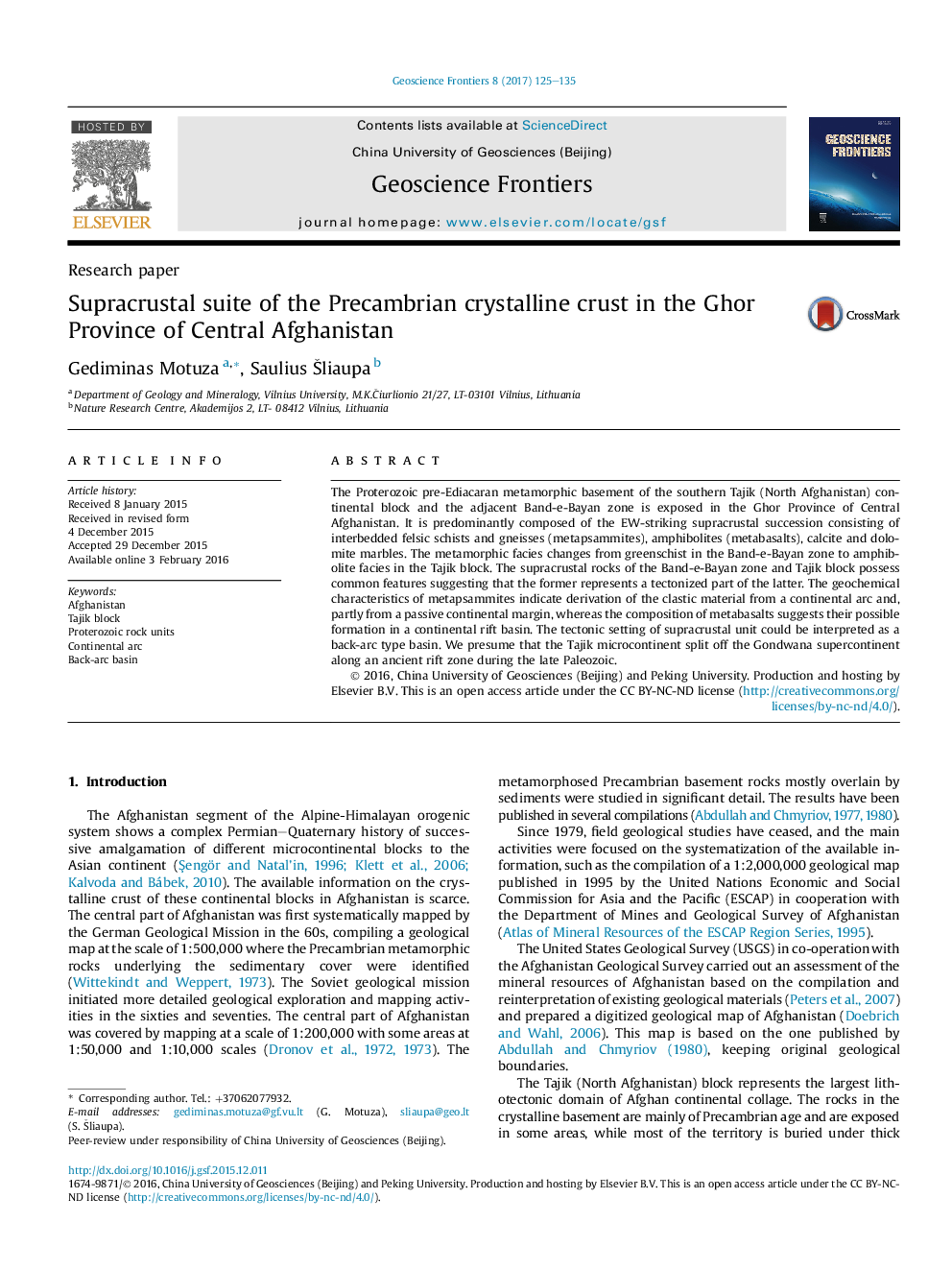| Article ID | Journal | Published Year | Pages | File Type |
|---|---|---|---|---|
| 5780292 | Geoscience Frontiers | 2017 | 11 Pages |
â¢Protoliths, provenances and tectonic settings of Precambrian supracrustal rocks.â¢Island arc and passive continental margin sources.â¢The Tajik microcontinent split off Gondwana along ancient rift zone.
The Proterozoic pre-Ediacaran metamorphic basement of the southern Tajik (North Afghanistan) continental block and the adjacent Band-e-Bayan zone is exposed in the Ghor Province of Central Afghanistan. It is predominantly composed of the EW-striking supracrustal succession consisting of interbedded felsic schists and gneisses (metapsammites), amphibolites (metabasalts), calcite and dolomite marbles. The metamorphic facies changes from greenschist in the Band-e-Bayan zone to amphibolite facies in the Tajik block. The supracrustal rocks of the Band-e-Bayan zone and Tajik block possess common features suggesting that the former represents a tectonized part of the latter. The geochemical characteristics of metapsammites indicate derivation of the clastic material from a continental arc and, partly from a passive continental margin, whereas the composition of metabasalts suggests their possible formation in a continental rift basin. The tectonic setting of supracrustal unit could be interpreted as a back-arc type basin. We presume that the Tajik microcontinent split off the Gondwana supercontinent along an ancient rift zone during the late Paleozoic.
Graphical abstractDownload high-res image (551KB)Download full-size image
